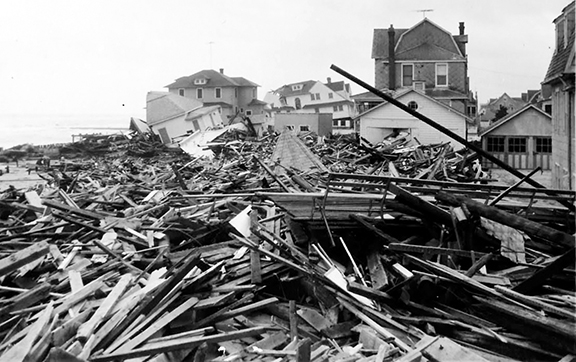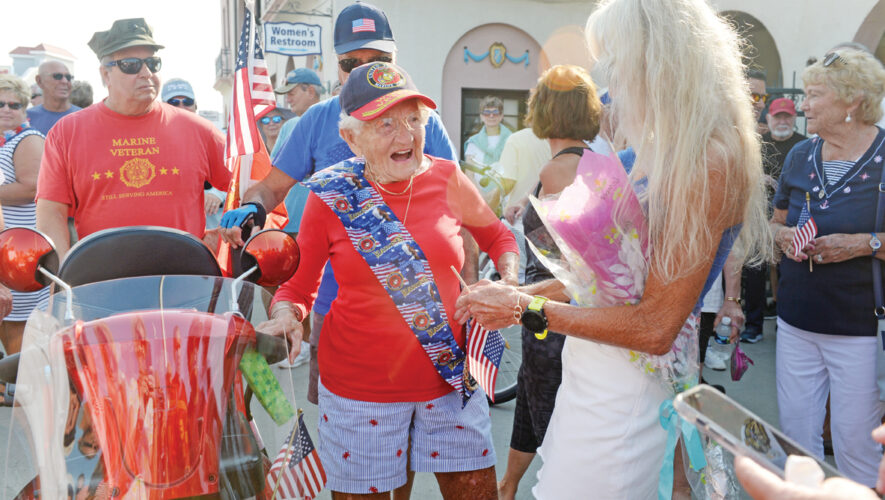The perfect response: Ash Wednesday storm brought Sea Isle community together to rebuild
For three days, the Ash Wednesday Storm of ’62 battered area shore towns, including Sea Isle City, which was decimated.
Sea Isle’s wooden boardwalk collapsed, many local homes were swept off their foundations and washed out to sea, and businesses suffered heavy damage. The entire beachfront was devastated.
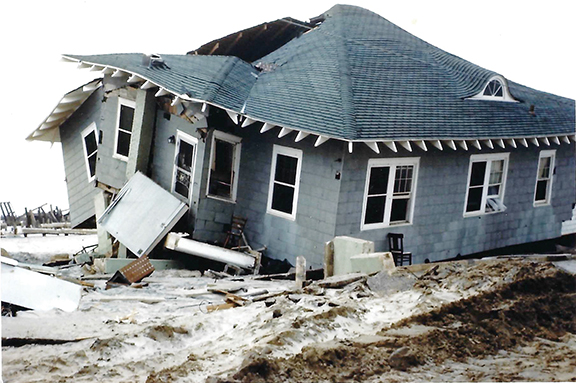
On March 16, members of the Sea Isle City Historical Society hosted a public presentation, “Our Perfect Storm and Our Community’s Perfect Response.” At the event, storm survivors shared their experiences. Their stories intersperse heroism and humor, terror and tenacity, resolve and resilience.
Storm survivors echoed this sentiment, “Everything was OK — until it wasn’t.”
The storm raged from Tuesday, March 6, through Thursday, March 8. The nor’easter was named the Ash Wednesday storm, after the holy day on which the storm produced the most destruction (March 7, 1962.) The epic weather event is also known as the Great March Storm and the Great Atlantic Storm.
“My childhood disappeared with the storm of ’62,” said Joe LaRosa, 70, who was 9 years old when the storm struck.
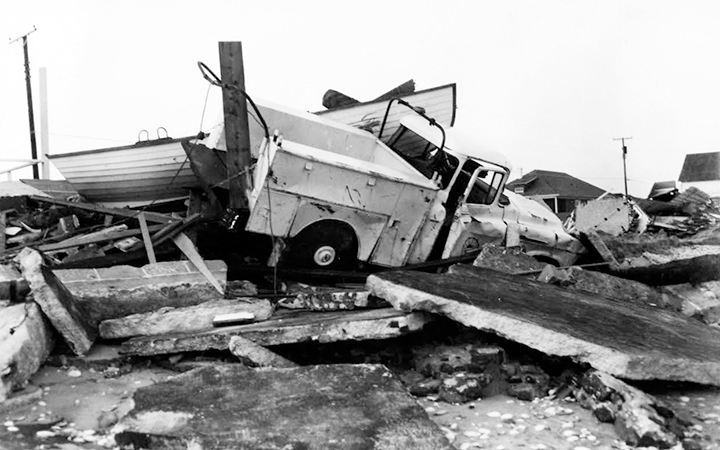
His favorite hangouts — a miniature golf course, a hot dog business, the Fean Hotel and the boardwalk carousel where he grabbed brass rings — were lost in the storm.
“But as a kid, you roll with it,” said LaRosa, who grew up with his brother, Pat, in a home at 43rd Street and Central Avenue, owned by their late parents, Joseph Sr. and Alice LaRosa. “I woke up Tuesday morning, the first day of the storm, and there was no school due to flooding, and that was OK.”
On the third day of the storm, LaRosa and most Sea Isle City residents were airlifted to the mainland. He remembers thinking the helicopter ride was “pretty cool.”
At the presentation, LaRosa, who has written two books on the storm — “Storm Stories: An Oral History” and “Our Perfect Storm” chronicled events while retelling his personal story.
At first, he recalls, virtually no one realized how fierce the storm would become. By the second tide on Tuesday afternoon, though, “utilities failed — the sewer system, water system, electricity and phone lines went down.”
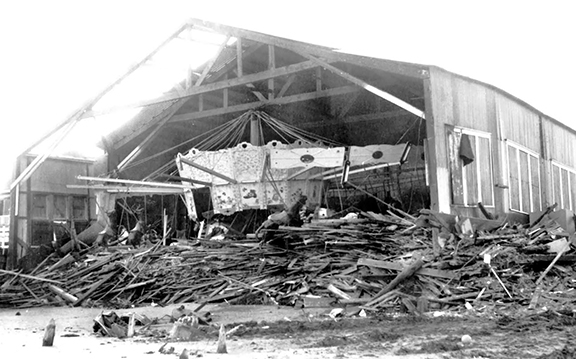
LaRosa explained there were scattered homes where utilities remained operational.
On Tuesday night, his dad, assistant superintendent of public works, drove a dump truck into the backyard of the family’s home, loaded Joe, his mom and his brother into the cab and took them to his uncle’s house, which still had electricity and phone service.
Conditions continued to worsen Tuesday night. One resident reported seeing refrigerators, beds, even walls with pictures still on them floating down the street.
“I woke up the next morning, (Wednesday) and there were 30 to 40 people in the house. My aunt and uncle had taken everyone in,” LaRosa said. “So while we didn’t know the scope of the storm, I started to think this storm was different.”
Neighbors took care of neighbors.
“My friend Lenny’s dad, Leonard [Bonitt Sr.], was the manager at the American Store (now Acme). He and others brought food to my uncle’s house from the store when the tide went down. I remember getting a Tastykake Kandy Kake and watching ‘Top Cat’ on TV,” LaRosa said.
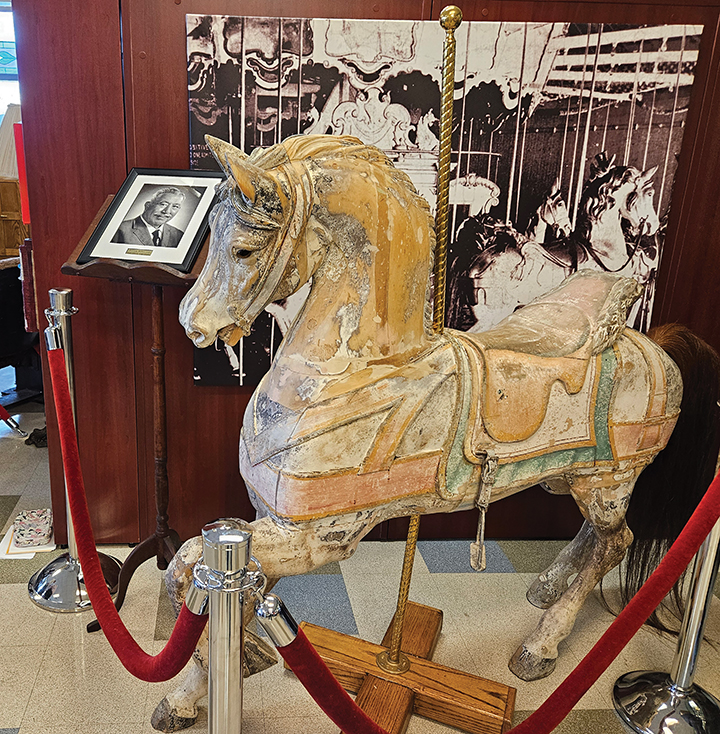
He recalled a tipping point.
“At the high tide on Wednesday night, things started to fall into the ocean — the Madeline Theater toppled, then the boardwalk went. The Excursion House, the largest building on the island, got knocked down. The tide didn’t drop. The meadows became submerged as the ocean and the bay met.”
Other buildings gone with the tide included the Sisters of Mercy Convent, the Surfside Hotel and parts of the Windsor Hotel.
On Thursday, when it was time to evacuate, LaRosa’s dad loaded his family into the bucket of his bucket truck to get to the helicopter loading zone. Nearly all of Sea Isle City’s 1,200 residents were forced to evacuate. Everyone was allowed to bring one suitcase.
Residents were airlifted to Ocean View and Woodbine. After reaching the mainland, LaRosa and his family went by train and cab to spend a week with relatives in the Port Richmond section of Philadelphia.
LaRosa pointed out that many of the men remained in town, including his father and Bonitt.
As in Sea Isle, residents of nearby shore towns had to evacuate. Many Cape May residents had to leave their homes after they lost essential services. Atlantic City was pummeled by 25-foot waves and wind gusts up to 58 mph.
Every survivor has a story
“I remember my father telling me I didn’t have to go to work because of flooding,” said Loretta Henry, who was 19 when the storm hit. “I was out of work for two weeks. My dad made sure we were out of town on Tuesday. He drove our family to Woodbine and then came back to town.”
Sea Isle City resident Diana Perry recalled surveying the destruction.
“To stand there and watch the buildings go down — the theater, which belonged to my grandfather — we knew things were bad. I remember we packed up what we could,” she said. “All I wanted was to get out with my kids. Every street we tried to drive down was flooded and filled with debris. We stalled. We had to wade through the water to get to a friend’s house, which had heat and electricity. We were there three days.”
Perry was reunited with her mother there.
“A bus picked us up and took us to the helicopter boarding area,” she said. “We landed in Ocean View and stayed with a cousin before heading to Philadelphia. Dad stayed in Sea Isle.”
Pat Haffert, 10 days short of his 13th birthday when the storm struck, recalled, being right on the beach at 50th Street.
“We had heat, electricity and we had relatives come over,” he said. “It was getting better until it wasn’t.”
Haffert said his family lived in an apartment his father carved out of an old rooming house. Their home was in the Surfside Hotel, a boarding house-style hotel owned by the family.
“I remember the howling wind, porches breaking off,” Haffert said. “It was very noisy with the rain and the wind.”
The lobby was getting flooded and waves were crashing through the front door.
“The tide surged,” Haffert recalled. “Waves knocked through the bulkheads, and the building started shaking. All of the sudden, the building lurched forward at a 15 degree angle. The picture window exploded. All the cabinets opened up, dishes were flying and breaking.”
At that point, his father Horace told his mother Helen “to take the children and run.” Pat, his younger brothers, Mark and Gregory, and his cousins, Michael and Jan, led the way, jumping over fences with a dog named Tubber to get to their neighbor’s house. His mother and others followed. The men in the family never showed up. They wound up at a relative’s house.
Eventually, family members were evacuated to the VFW post where they boarded a helicopter. “Looking down, the roof of a bus looked like an orange surfboard,” Haffert said.
The men in the family stayed in Sea Isle City.
Eva Feeley and her family lived in Townsends Inlet. Her family tried to leave in their car.
“A wave broke on top of the car. Dunes were being breached. We had no choice but to turn around and go home,” Feeley recalled. “We fared well. Water came up to the porch but never came in. I remember thinking, ‘This is what it must be like to be on a cruise ship.’ The dunes went down, and we had a clear view to Avalon. It was truly terrifying.”
Feeley and her family were taken by boat to the Coast Guard station and flown by helicopter to Ocean View.
“It was a life-changing event. When my brother, Richard, and I came back to look at the town, we were astonished. Everything was leveled. An in-ground hotel pool floated down the street. My brother’s best find? A set of false teeth.”
Feeley and her family moved away, but later she and her husband returned.
“I’ve been living the island life with my husband for 50 plus years now,” she said.
Lenny Bonitt, 10 when the storm struck, remembers waking up to flooding and seeing the family car float away. He was evacuated by helicopter with his brother, sister and mother.
“Going up seeing everything, it was devastating — a shock,” he said.
John Loeper, a longtime Ocean City resident who is president of the Ocean City Historical Museum and chairman of U.S. Life Saving Station 30, was 17 when the storm struck. He and his family were living in Havertown, Pa., when they heard about the storm.
Loeper’s dad hired a plane from the Millville airport to check on the family’s summer home at 23rd Street and Wesley Avenue. The aerial view was “surreal,” Loeper said. Looking south at about 500 feet in the air, “The houses looked like checkers thrown on a board,” Loeper recalled.
His family’s home, which sat on a knoll, was spared damage. However, knee-deep sand covered their lot. Soon after the storm, Loeper and his dad arrived at their summer home with a crew to shovel the sand; mixed in was a rowboat and an 8-foot beach locker.
The Parrot Lady
As recounted in LaRosa’s book “Storm Stories,” Mrs. Morton, a Townsends Inlet resident, had a small side business selling pet birds out of her home. Waiting to be evacuated at the Coast Guard station between 81st and 82nd streets and Landis Avenue, she carried a bird cage, 3x3x4 or larger, filled with multicolored, large exotic birds.
As she was getting ready to board the helicopter, she was told by the commander of the Coast Guard base that she could not bring the bird cage with her because it was too large. She asked for a ride home and the chief arranged it. She soon returned to the evacuation center with all of her birds stuffed into one small cage. All evacuees landed safely in Ocean View — including the birds.
Alice the Carousel Horse
Prior to the storm, children delighted in riding a merry-go-round, part of Marconi’s Carousel amusement business, on the Sea Isle City boardwalk. It featured 44 hand-carved horses. The storm obliterated the merry-go-round. Sixty years later, one of the horses that was saved from the storm, “Alice,” was donated to the Sea Isle City Historical Museum by Ann Bacon of Chestnut Hill, Pa.
Bacon, 14 when the storm struck, said her father, the late Edward Bacon, arranged to buy the carousel horse for her because she always wanted a hobby horse. It was lying in the rubble of the collapsed carousel but was not destroyed.
The Perfect Storm
LaRosa explains that a low-pressure system was cranking across the country while another storm was barreling up from the South. They met, then the storm stalled off Sea Isle City.
The event coincided with the perigean spring tide when the moon is closest to the Earth and tides can be significantly higher than other times of the year.
“It was the three-day perfect storm that lasted through six tide cycles,” LaRosa said. “There were no indications that the storm was coming. We had no satellites for weather back then.”
The Ash Wednesday Storm is regarded as one of the most destructive to hit the East Coast of the United States. It swept through coastal areas from North Carolina to New York. Statistics show there were 40 fatalities; none in local areas. The storm reportedly caused hundreds of millions of dollars in property damage.
Heroism
On the first day, the Coast Guard responded to a fire at Mercy Hospital at 59th Street and Landis Avenue. Their vehicle was swamped by flood waters so the Coast Guardsmen waded in the freezing water 2½ miles, put out a small fire and waded back.
Rebuilding
LaRosa explained there was no Federal Emergency Management Agency at the time.
“If you lost a house, you lost a house. If you lost your tools, you lost your tools. Flood insurance was costly, prohibitive. We relied on each other. It’s the self-reliance of the people that rebuilt the town,” he said.
La Rosa credited World War II veterans who settled in Sea Isle City with rebuilding the town. Notably, large plots of undeveloped city-owned land were sold to help fund Sea Isle’s reconstruction.
“The town got knocked down,” LaRosa said, but the spirit of the residents was indomitable. “The people fixed it, and got the town ready for the summer season.”
“It was the perfect response to the perfect storm,” he added.
Jack Gibson, Sea Isle City councilman and a ’62 storm survivor, recalled hearing the water slapping at the floorboards of his home where he lived with his wife, who was expecting at the time, and their son, 3.
At the presentation, he discussed actions that have been taken to help prevent the destruction of severe storms.
“We’re now eligible to refurbish sand on the beach. In ’62, we didn’t have this. We are better off because of beach replenishment,” he noted.
Currently, a contractor is using a dredge to transport sand via a pipeline from a borrow site offshore to the shoreline where it’s pumped to needed areas. When the project is finished, beaches will be replenished from about 29th to 53rd streets, as well as 73rd Street to Townsends Inlet.
“We’re succeeding on the oceanfront and working on the bay,” Gibson said, noting that a back bay study is under way by the Army Corps of Engineers.
Ideas such as diking are on the table. Municipal and county plans call for installing pumping stations in phases.
“In this community, the people come together when needed for the betterment of the community,” said Len Desiderio, mayor of Sea Isle City and director of the Board of Cape May County Commissioners. “They’ve been doing this for decades and will continue to do it. The storm changed the landscape and transformed the community. Sea Isle City worked together to rebuild the community.”
Joyce Molter, president of the Sea Isle City Historical Society, commented that the Ash Wednesday Storm of ’62 showed “how people of this small town came together and helped one another to rebuild so we have the beautiful town we have today.”
– By ALICE URBANSKI/For the Sentinel


